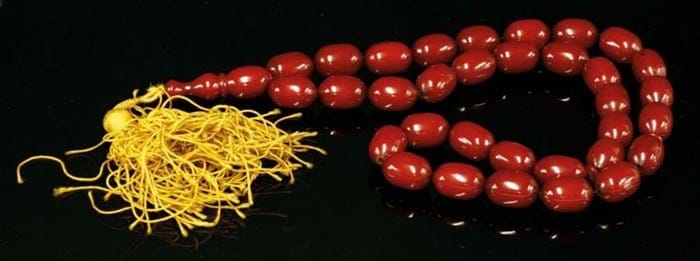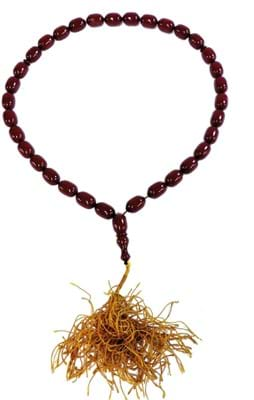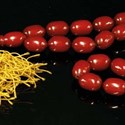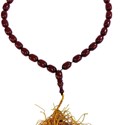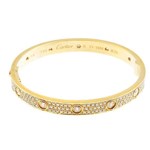However, this changed with the appearance, towards the very end of the sale, of a lot catalogued simply as “a single row uniform Bakelite bead sautoir, with oxblood, olive-shaped beads”.
Bidding had been expected in the £80-100 range.
Instead, with a huge commission bid left on the book competing with countless internet participants, the auctioneers were able to start the contest at £1100. The two gentlemen in the room failed to make an impression as a bidder on thesaleroom.com won out at £18,100 (plus premium).
These Ottoman beads are indeed a form of synthetic resin: faturan.
The bead carvers in Istanbul – makers of the garlands of beads known as tesbih and komboloi – were swift to appreciate the potential of Bakelite c.1910. They made their own, mixing it with dyes, powdered amber and other additives to achieve the desired result. Secret recipes were jealously guarded.
This particular string, with its perfectly uniform cherry amber beads, carved centrepiece (or imame) and silk tassel with gold wire, has many of the stylistic hallmarks of the Ottoman master Ulvi Iskender.


